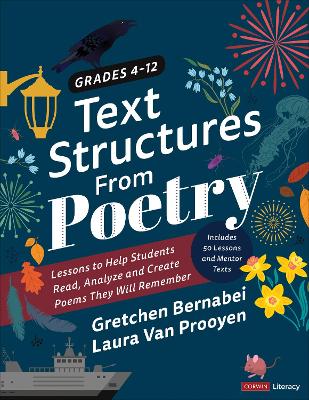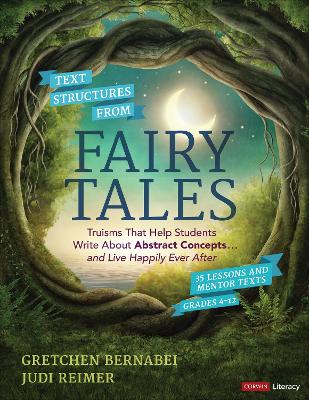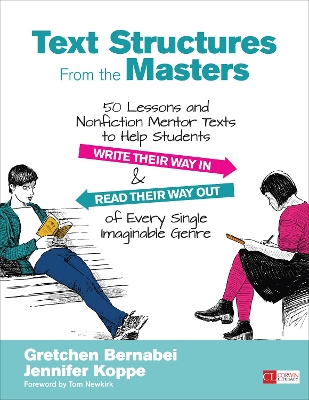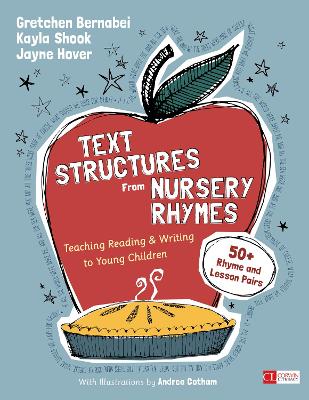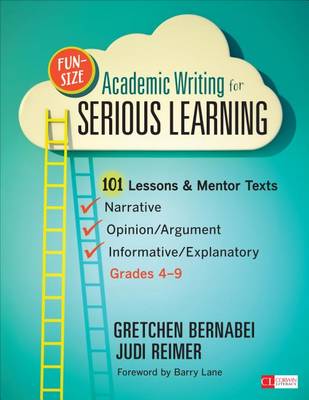Corwin Literacy
6 total works
Text Structures From Poetry, Grades 4-12
by Gretchen S. Bernabei and Laura Van Prooyen
"Pop the hood" on fifty poems to discover what makes them work and lead the way to a rewarding love of poetry for teachers and students alike.
Text Structures From Fairy Tales
by Gretchen S. Bernabei and Judith A. Reimer
Text Structures from the Masters
by Gretchen S. Bernabei and Jennifer L. Koppe
Text Structures From Nursery Rhymes
by Gretchen S. Bernabei, Kayla Shook, and Jayne Hover
It’s one of education’s greatest challenges: How do we shape our youngest students, who often are just learning how to hold a pencil, into capable writers within the span of a single school year?
Text Structures from Nursery Rhymes offers the solution: a clear and actionable framework for guiding young students to write successfully in any style, from narrative to descriptive to persuasive.
The key to the strategy lies in using familiar text structures to break down a story into its main components — for example, "Where I was," "Who I saw," and "What I thought" — in order to immediately thrust students into the role of the writer.
This groundbreaking book provides 53 lessons, each centered around a classic nursery rhyme, and all the tools you’ll need to
- Capitalize on the story’s rhythm and rhyme to make an instant connection with your students
- Convey the story’s text structure using the lesson’s whimsical illustrations, providing a visual model that resonates with children
- Lead the classroom in creating new stories — in words, pictures, or both — utilizing the text structure you’ve defined
- Put each nursery rhyme to work as a springboard for important language-arts topics
- Fine-tune your approach at every step based on your preferred teaching style and students’ progress
Put Text Structures from Nursery Rhymes to work in your classroom and discover how text structures, already a remarkable success in later grades, can also have a profound impact on younger students’ progress.
Bonus!
Includes eight downloadable paper dolls—1 man, 1 woman, 1 girl, 1 boy, and 4 animals. Your students can use the paper dolls to retell the nursery rhymes, illustrate their own stories based on a nursery rhyme, or even to act out stories from other books in your classroom library.
Fun-Size Academic Writing for Serious Learning
by Gretchen S. Bernabei and Judith A. Reimer
Want to improve writing about reading? Use these lessons and concrete text structures designed to help students write self-generated commentary in response to reading.
